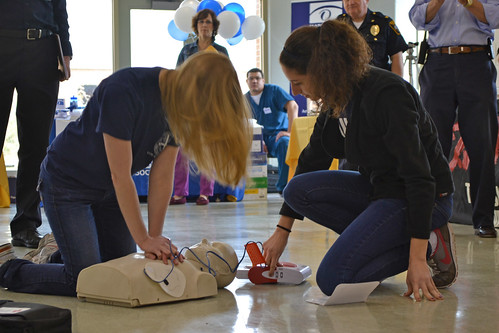The SCOTUS this week ruled that when it comes to abortion, availability is more important than safety. What their ruling truly says is that women have a constitutional right to have an abortion, but that abortion doesn’t have to be
- safe
- clean
- professional
There shall be an organized nursing service under the direction of a qualified registered nurse (RN). staffed to assure that the nursing needs of all patients are met.
The responsible individual for nursing services shall be a qualified registered nurse (RN) whose responsibility and authority for nursing service shall be clearly defined and includes supervision of both personnel performance and patient care.
There shall be an adequate number of RNs on duty
Facilities that provide moderate sedation/analgesia are required to have the following additional staff: (A) a second individual on duty on the premises who is trained and currently certified in basic cardiac life support until all patients have been discharged from the facility; and (B) an individual trained and currently certified in advanced cardiac life support and, if surgery is performed on pediatric patients, pediatric advanced life support shall be available until all patients have been discharged from the post anesthesia care unit.
include the following in patients’ medical records: (1) patient identification; (2) allergies and untoward reactions to drugs recorded in a prominent and uniform location;(a) Patients shall be treated with respect, consideration, and dignity.(b) Patients shall be provided appropriate privacy.(c) Patient records shall be treated confidentially and, except when authorized by law, patients shall be given the opportunity to approve or refuse their release.
Those were all parts of the ambulatory care law in Texas that the plaintiff in this case, Women’s Health found to be burdensome? Why? Because hiring trained staff and providing proper medical records and treating patients as individuals instead of herding through like cattle is time consuming and costly! And now abortion providers are unshackled from those restrictions.

Lori Schaull via flickr licensed cc
And pro-abortion folks and young women who don’t know any better, support it.
My son, Calvin, has been a professional EMS worker for five years and a paramedic for three. He had a lot of issues with the mandates that clinics have to have wide hallways and adequately sized rooms. Remember, abortion entails putting a cutting instrument inside of the human body and includes risks of bleeding.
Calvin writes:
So can a mandate be made for the size of a hospital room, how about a ER room? Yes and there have been. In regards to the Texas women protection law that the Supreme Court shot down the other week required abortion clinics to have a standard size room.
Speaking from a EMT Paramedics view, the more space the better. It’s hard enough to bring in 2 gear bags at 50 lbs apiece plus a cardiac monitor at 60 lbs and all that along with a stretcher that is 6.5 feet long 4.5 ft high and 2.5 ft wide. Pushing all of this into a small clinic for emergencies can be an obstacle in and of its self. There have been times where I have had to walk a critically ill patient to the stretcher because the stretcher just can’t be taken any closer.
In the situation of abortion clinics, generally they don’t call 911 till the patient has become “hemodynamical unstable”. This happens due to internal bleeding caused by the procedure. (Low blood pressure)
On several occasions patients have needed to be placed on a tarp to be carried from a room to the stretcher. If the patients were to stand and try to walk they could and have had a loss of consciousness.
Allowing for larger clinic room in case of medical emergencies also allows for better and safer treatment. EMS had a female patient in her 20s in a abortion clinic who had a loss of consciousness in one of the back rooms. This room was so small that the a patient and maybe two individuals could stand near. The hallways were also smaller than normal. After the woman was found to be in cardiac arrest, 911 was called. The EMS crew had to drag the patient into the lobby of the facility so that the EMS crew and four fire fighters could have enough room to perform resuscitation efforts. In this case after 600 chest compressions and 2 defibrillations, the patient had a good outcome.
Is requiring larger rooms unconstitutional I don’t think so.
So good job SCOTUS. Thanks to your almighty wisdom, young women can be dragged out of rooms, down narrow hallways, and resuscitated in lobbies or parking lots all over the country to keep them alive.
But at least you kept their constitutional right to an abortion available. Good job.

John via Flickr licensed cc
@import url(//www.google.com/cse/api/branding.css);

